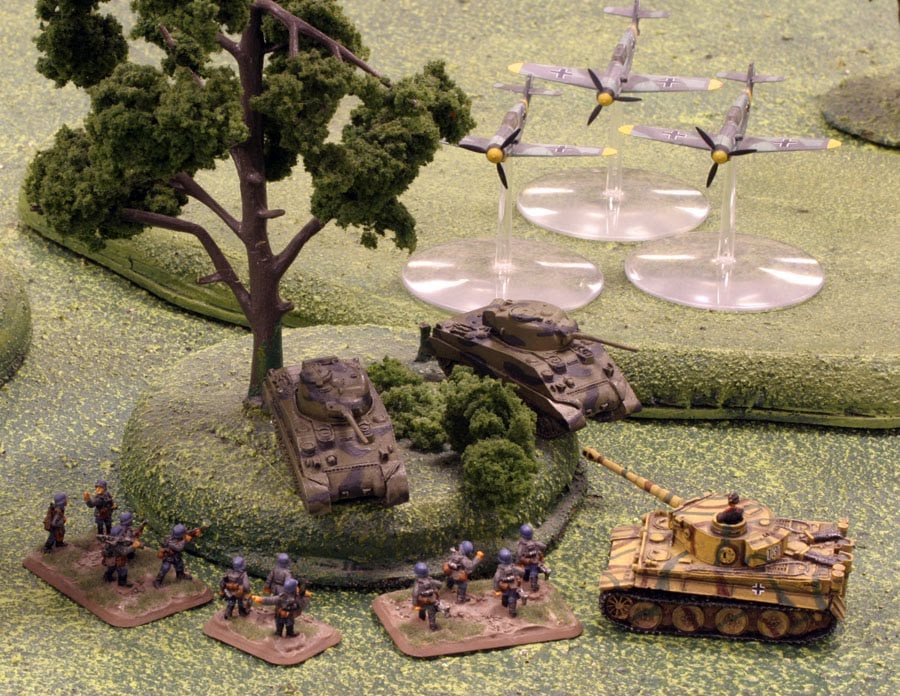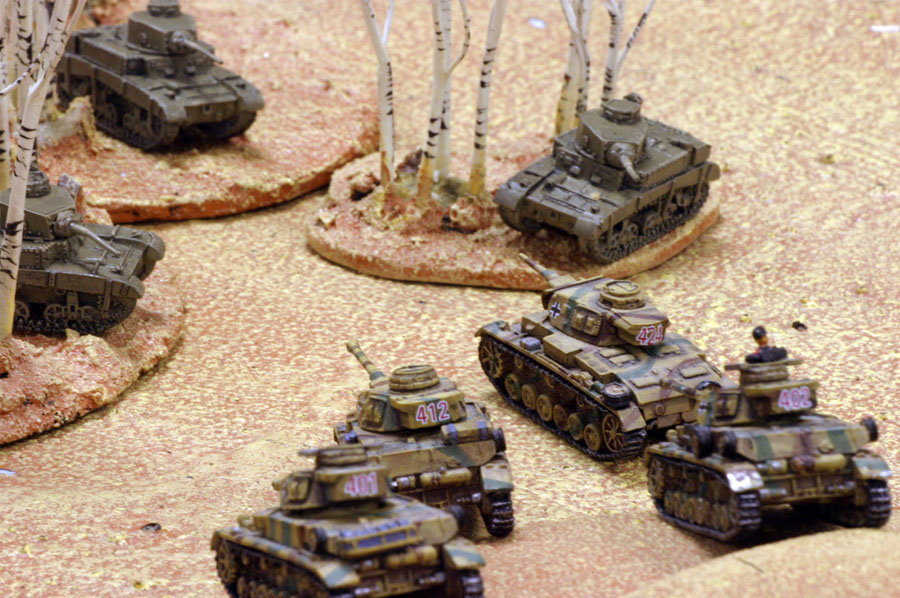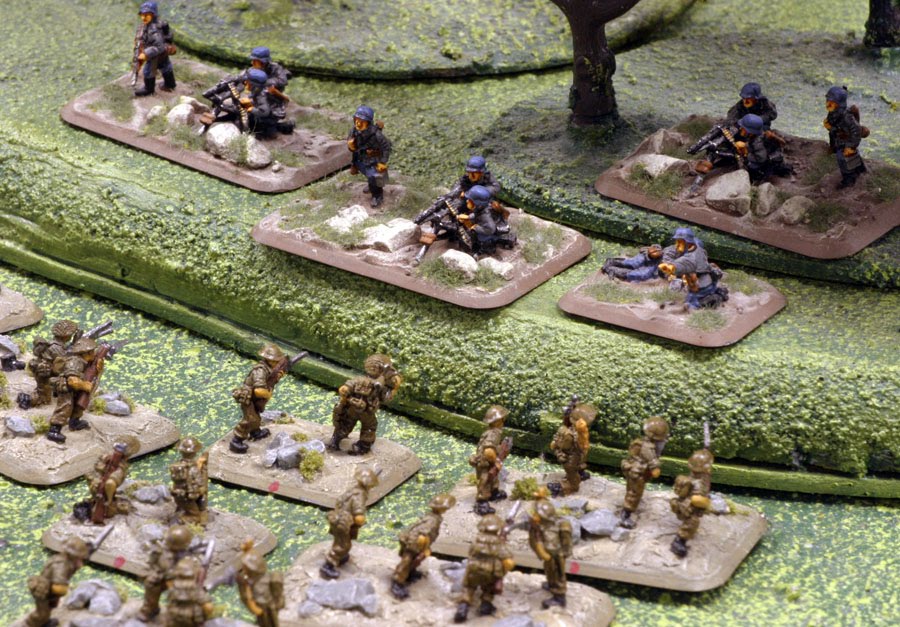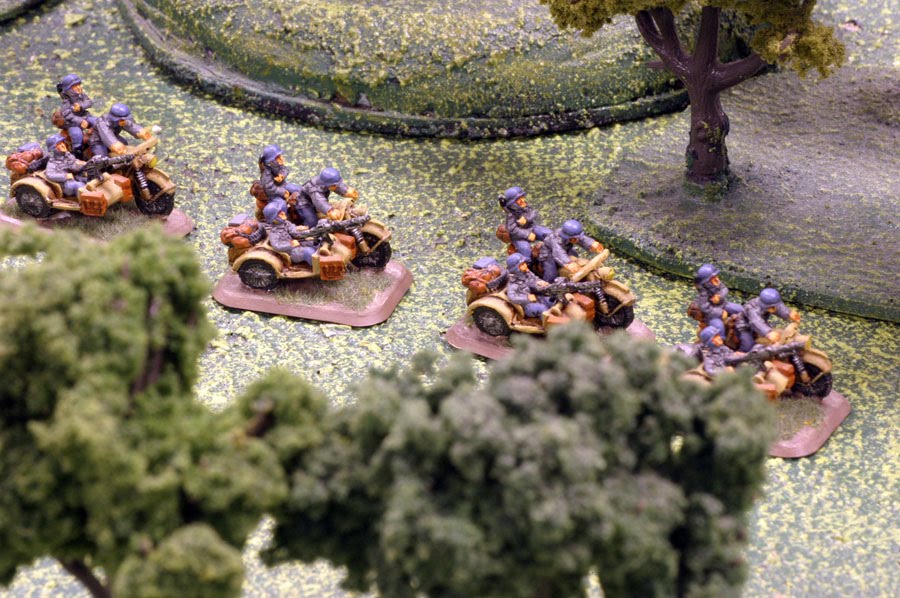Flames of War: Armylist Construction 101

Bulwark here to talk about building an armylist in Flames of War. Now that we are familiar with Flames of War game play basics, its time to craft an overall plan for your force.
Start thinking of what your army is going to look at these points levels:
600 pts
1000 pts
1250 pts
1500 pts
1750 pts
2000 pts
A good starting army level is 600 pts. 600 point armies only have to have the Company HQ and 1 Combat Platoon. This level gives you an idea of how to play your army without investing too much. These games are played on half boards and the scenario is usually ‘Free For All’ from the main rulebook.
All other Armies have to have HQ and 2 Combat Platoons and all scenarios are used. Nationally, most Late-War tournaments are 1750 pts, and Mid-War tournaments are at 1500 pts. Though 2000 pts and 1250 pts tournaments are common enough to mention. 1000 pts occurs once in a blue moon, but is used in doubles formats where two players are teamed up against two other players.
Some general guidelines that should always be in the back of your mind.
Stacking the Army: Try to keep about 2/3rds of points in the platoons that you will start on the table in Half deployment missions. This is to keep you in the game or can win you the game at the early stages. It always helps you because you do not have to rely on Reinforcement rolls and allows you to have enough force to take advantage of any opportunities that may arise.
Tanks: There are three forms of tank lists that you will often see on the table. The tank hoard takes large numbers of lighter tanks. The heavy armor list will run several of the elite heavy tanks; King tigers, Crocodiles, IS2s, etc. The Sherman list is the fallback for most US and British based armies, combining better armor than the lighter tanks, and higher numbers than the heavy armor list, and the disadvantages of both.
Infantry: You have to prepare for three basic infantry models. The Russian infantry swarm bring scores of infantry. Each one isn’t very effective, but in mass they are devastating. Elite infantry are another threst. Dug in fearless veterans don’t do much offensively, but are extremely difficult to get off objectives. Dedicated assault lists will take large number of infantry with anti-tank weapons and machine guns. They have enough warm bodies to take casualties across the board, then use their weapons to overwhelm the opponents defenses.
Keep in mind that it important how you will react to each of these threats. Realize that no list has a complete answer all of these threats. Ultimately, this is a giant Rock, Paper, Scissors Games. For example an infantry list will generally eat most heavy tank Armies, but they fear medium armor companies and attacking other infantry armies. In general Flames of War rewards the combined arms approach to army list building and super specialized lists will often times find themselves in untenable situations.
3) Note the value of multi-role units.
One thing you might want to stay away from is one-dimensional Platoons, especially if points are tight. For example, unarmored anti-aircraft vehicles are really only good at anti-air duties. They tend to die very quickly if confronted with anything else. However, armored AA not only provides protection against aircraft, but now can attack infantry with it’s high rate of fire and resistance to small arms fire. Reconnaissance infantry teams provide two functions, one is protection against ambushes, but the other is impromptu force of grunts for emergencies; especially for point strapped armored companies.
~That’s enough to get the gears turning for your first army cadets. We’ll be moving onto the nation specifics next time.









